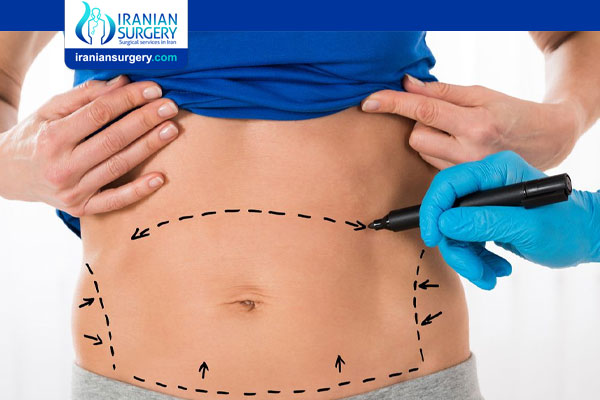Warning Signs After Tummy Tuck
Warning Signs After Tummy Tuck
A tummy tuck, also known as an abdominoplasty, is an incredibly popular cosmetic surgery treatment that targets one of the areas of the body that causes us to feel most self-conscious – the abdomen. Tummy tuck surgery can be carried out for many reasons, but it is most commonly seen following significant weight loss or after a patient has had a baby when they want to see excess skin and fat removed and be rewarded with a smoother, tighter, and flatter stomach.
What Are Some of The Tummy Tuck Risks You Should Be Aware of Before You Have This Surgery?
The list of tummy tuck risks below includes both very rare and fairly common complications for this extensive and invasive plastic surgery. An experienced plastic surgeon can discuss your personal risk profile based on your medical history, the elasticity of your skin, the type of abdominoplasty you need, your lifestyle, and other factors. That way, you can make an informed decision about whether the risks are worth it for you. Be sure to get answers to all your questions prior to signing the informed consent form. This may include asking what course of action your surgeon would take if you do have a complication. Knowing what to expect in advance can help you identify potential warning signs of a complication and help you stay calm if something does go wrong.
Tummy Tuck Risks: During the Operation
Adverse reaction to anesthesia resulting in respiratory failure or cardiac arrest is the most serious risk since it can cause death. However, the chances of this actually happening are extremely small. If you do have a history of allergic or adverse reactions to anesthesia, you are not a good candidate for a tummy tuck. Sometimes, patients may go into shock simply from the physical trauma of the surgery itself (especially for an extensive abdominoplasty or one done in conjunction with other plastic surgery procedures). Limiting yourself to one cosmetic surgery at a time is usually the wisest course of action.
Excessive bleeding is another potentially serious side effect. This is most common in patients who are taking medications that interfere with normal blood clotting. Since there are literally hundreds of prescription and over-the-counter drugs that can thin the blood and affect clotting, it is vital for you to disclose ALL substances you are taking prior to surgery. Your surgeon will let you know what is safe to keep taking, if you need to adjust your dosage, or if you should stop taking a medication temporarily.
Surgical error such as unintentional damage to important blood vessels is another potential risk during abdominoplasty surgery. Every surgeon makes mistakes at some point. However, this is much more likely with an inexperienced surgeon or one who agrees to do the surgery even for patients who are poor candidates. To protect yourself from this risk, you should thoroughly research the background and reputation of the surgeon you choose for your abdominoplasty. If you are turned down by one or more surgeons based on your risk profile, you should reconsider whether getting the surgery is really a good idea for you.
Warning Signs After Tummy Tuck: During Early Recovery
The first week or two after tummy tuck surgery is the time when a number of serious complications may arise. These include:
. Post-operative bleeding (in extreme cases, this may require additional surgery to stop the blood loss) Excessive bleeding can weaken the body and immune system and prolong the recovery process. It can occur if the patient took anti-inflammatory medication and even some natural supplements which have blood thinning properties before the surgery. Excessive bleeding might also occur if the patient applied too much pressure on the incisions and caused them to rupture. In very rare cases, excessive bleeding might be caused by internal trauma. Make sure to get medical assistance in case this occurs.
. Fluid accumulation (the fluid may need to be drained)
. Bloods clots including deep vein or pulmonary thrombosis which can be fatal (walking as soon as possible after surgery may help reduce this risk)
. Fat necrosis causing lumps under the skin (fatty tissue that has its blood supply disrupted by the surgery may start to die)
. Wound separation (the edges of the wound don’t knit together and the skin at the edges may die leading to permanent skin loss and the need for additional surgery to close the wound)
. Wound infection (this may be treated with antibiotics if mild and with additional surgery if severe) The signs of an infection are high fever, intense pain in the operated area, pus coming from the incision site, and redness in the area. To avoid an infection, the plastic surgeon will prescribe antibiotics to be taken for five days post-op. However, it is essential to notice the signs as soon as they occur to get medical assistance.
It is normal to feel a bit under the weather and even irritable and nauseous after abdominoplasty and until the effects of the general anesthetic completely disappear, but if a general unwell sensation is persistent, make sure to contact the plastic surgeon.
About Iranian Surgery
Iranian surgery is an online medical tourism platform where you can find the best plastic surgeons in Iran. The price of Tummy Tuck in Iran can vary according to each individual’s case and will be determined by an in-person assessment with the doctor.
For more information about the cost of Tummy Tuck in Iran and to schedule an appointment in advance, you can contact Iranian Surgery consultants via WhatsApp number 0098 901 929 0946. This service is completely free.
Source:
https://hourglasstummytuck.com/worrying-signs-after-an-abdominoplasty/


